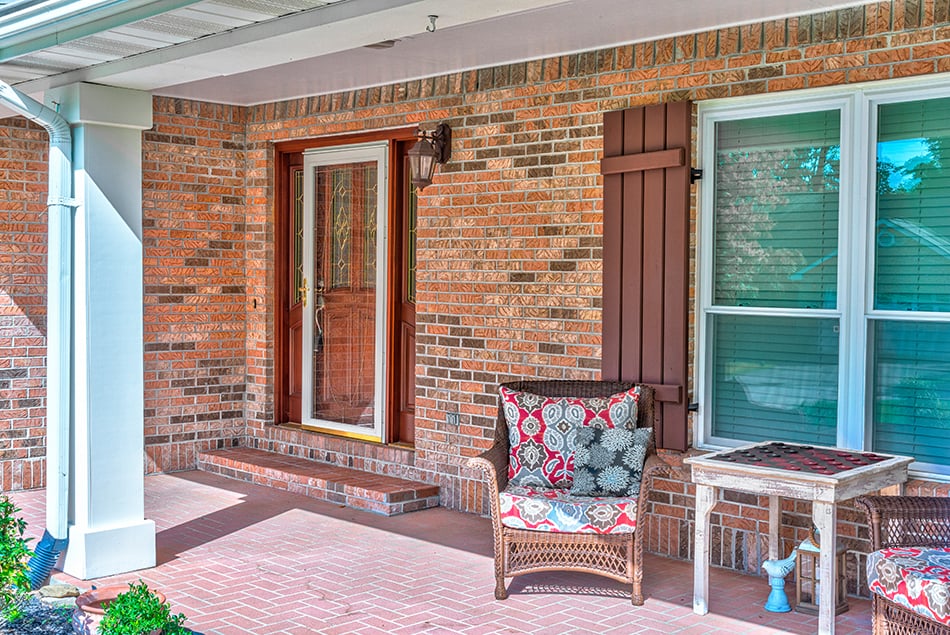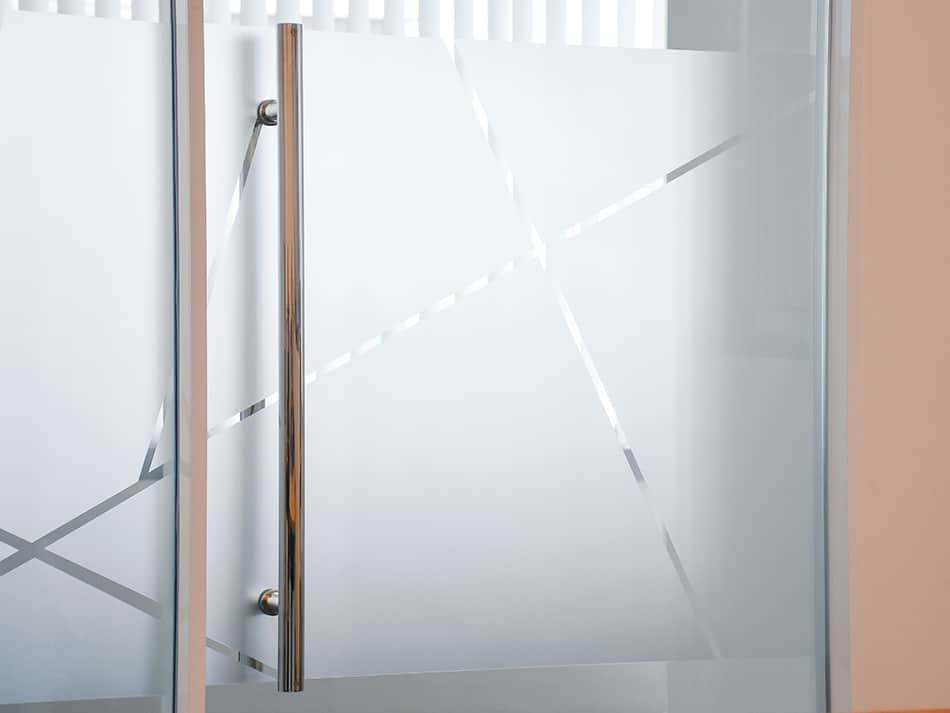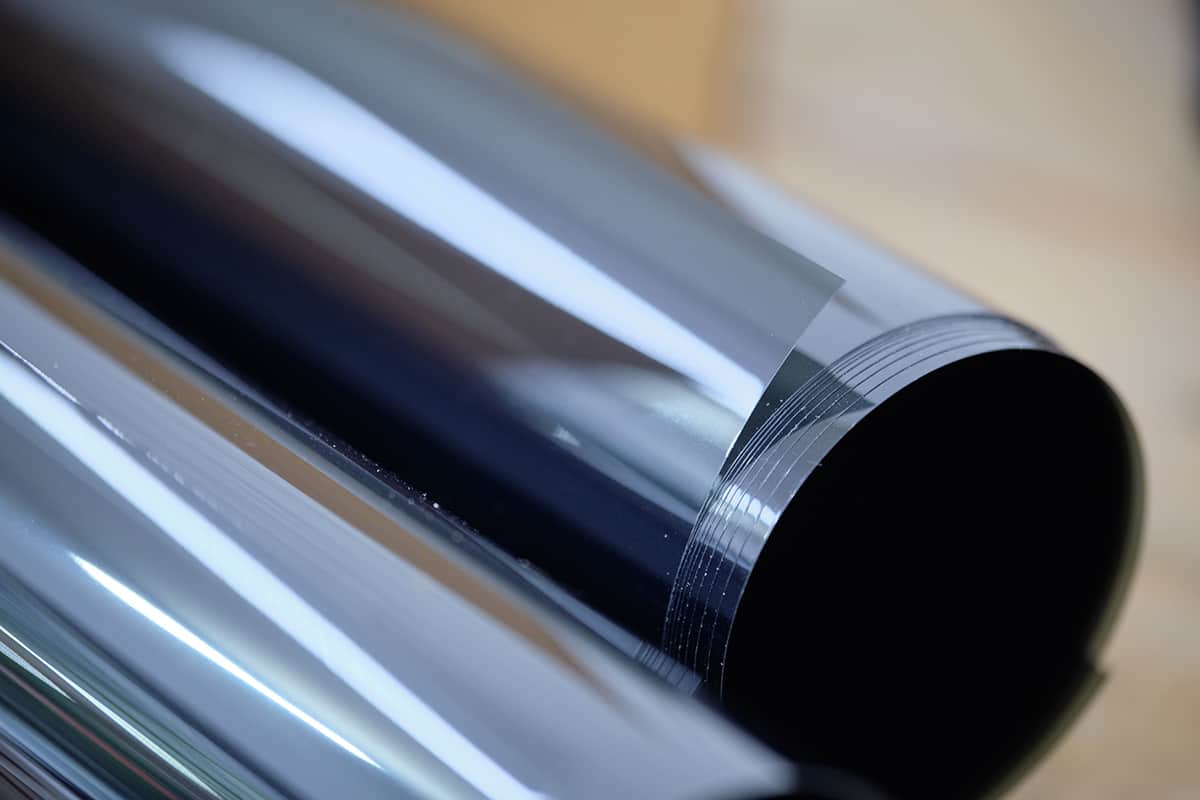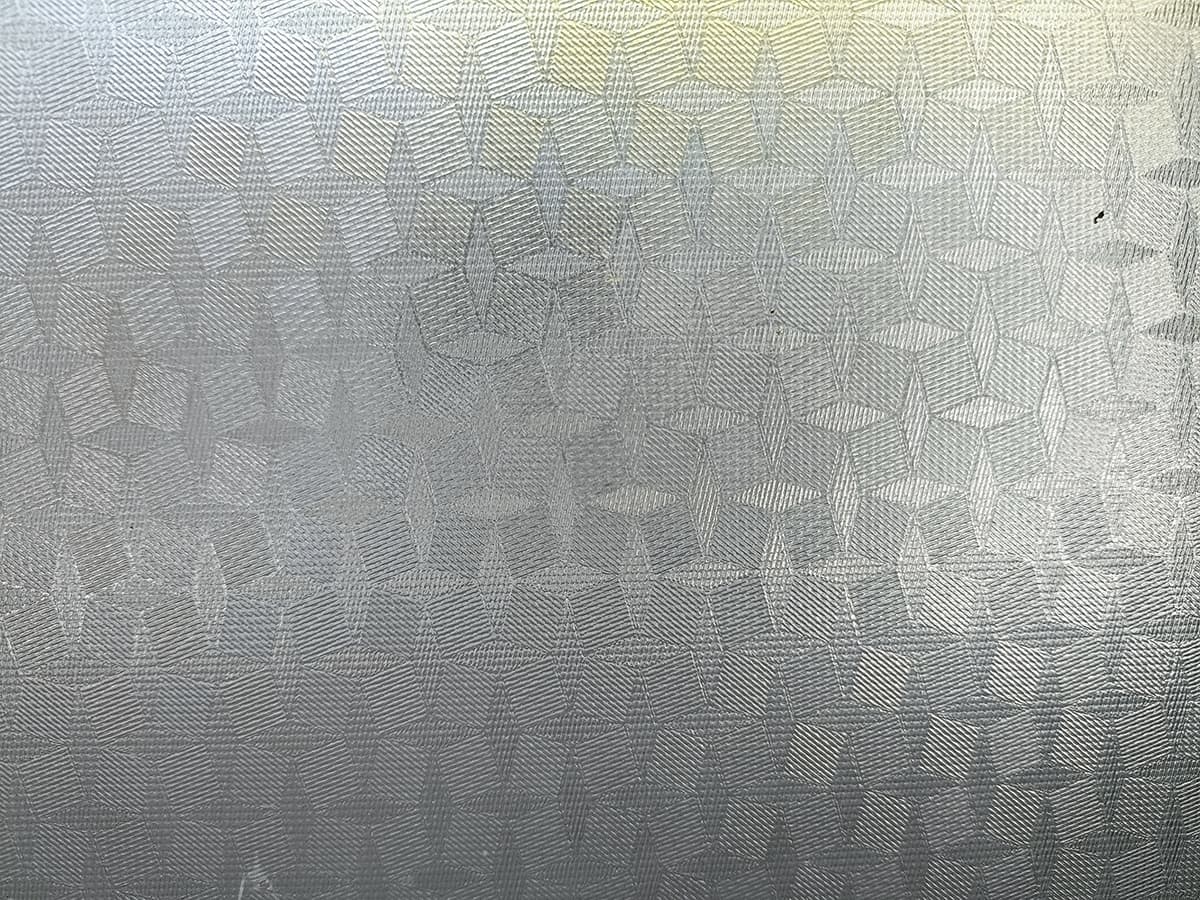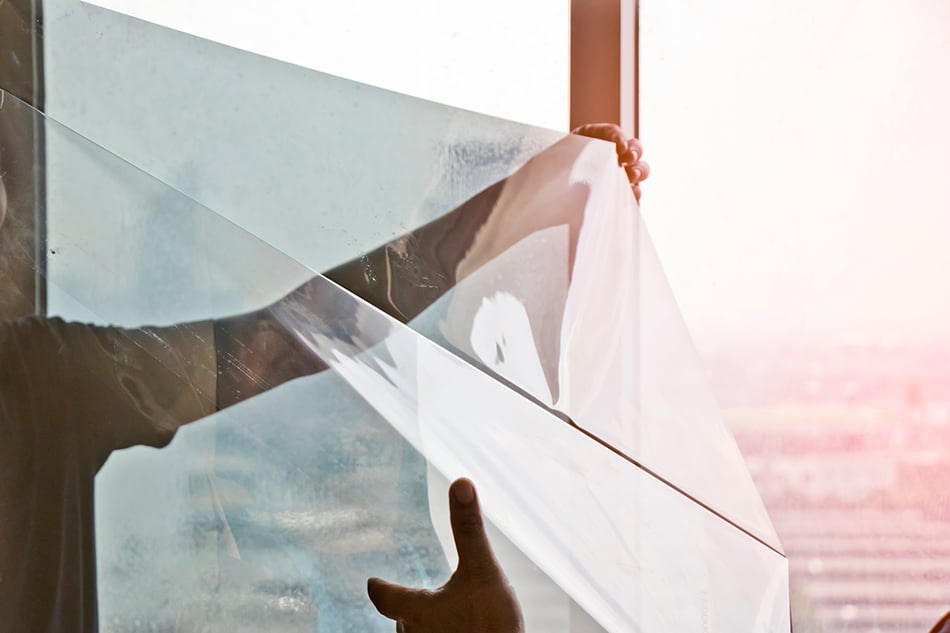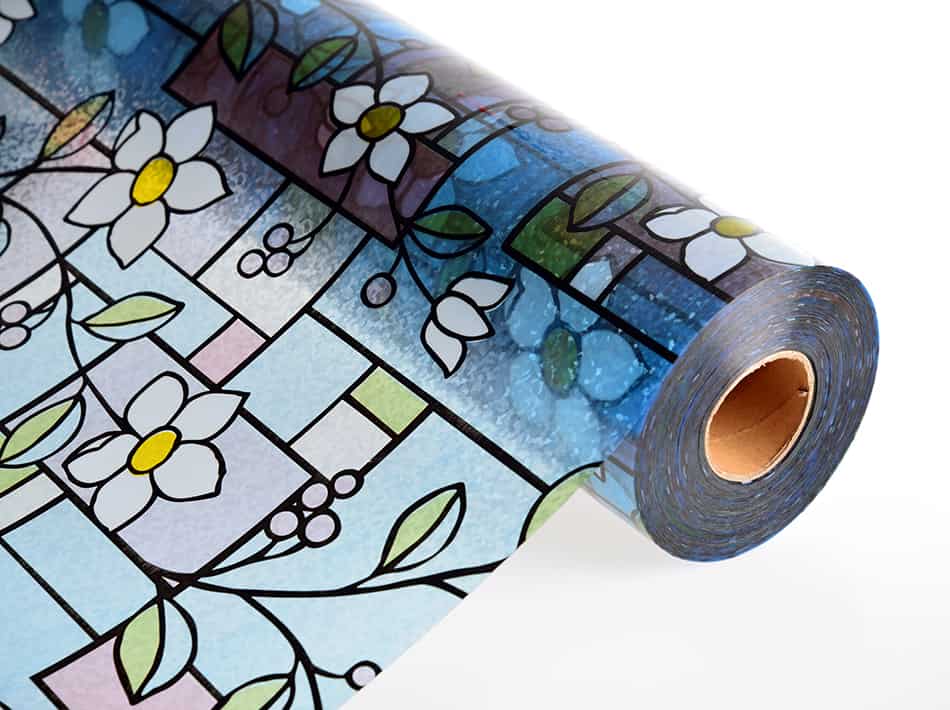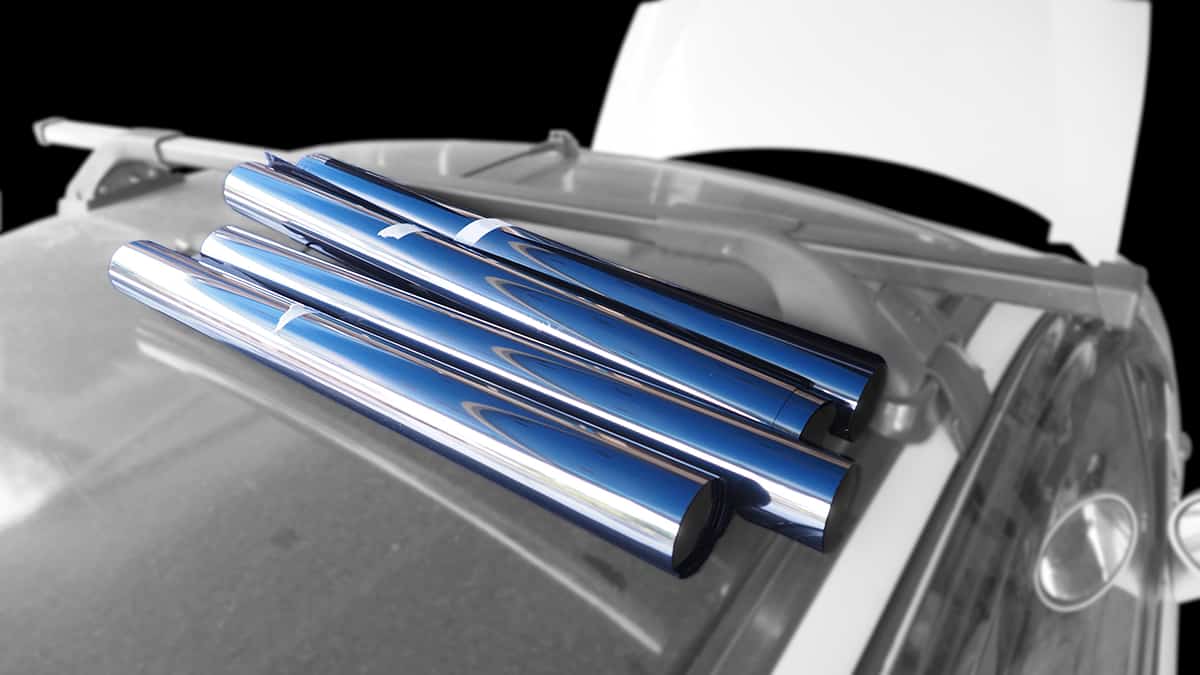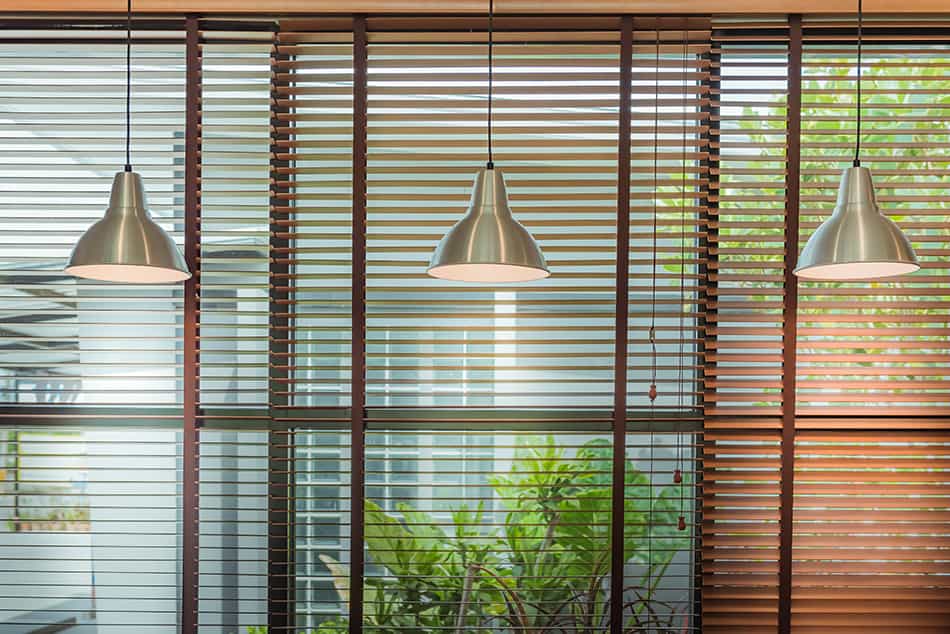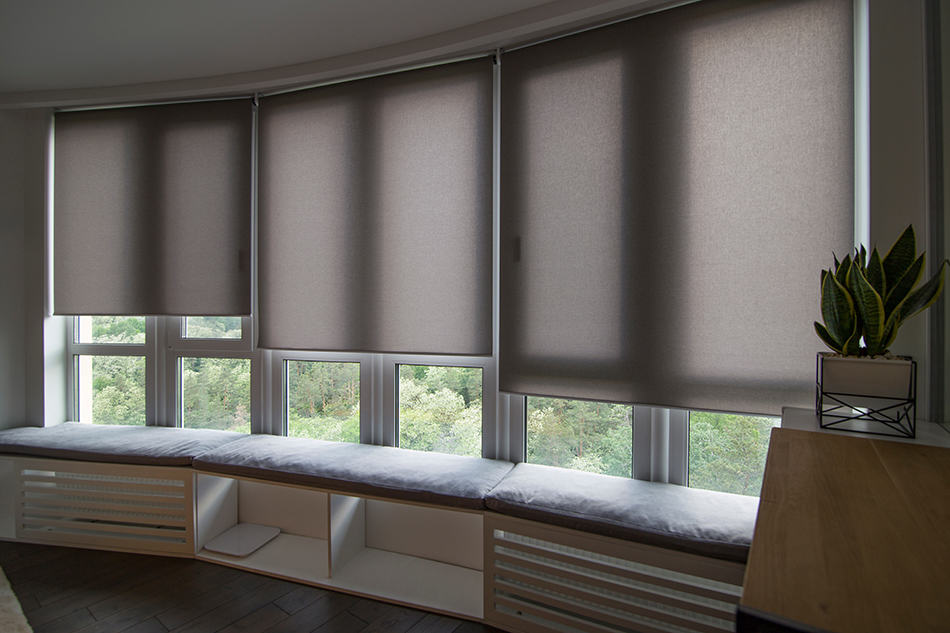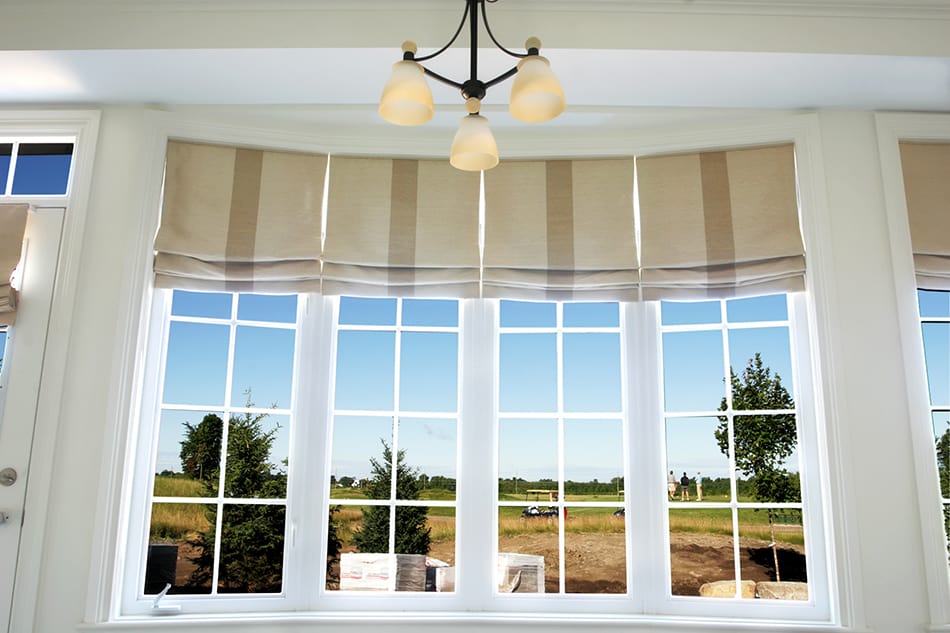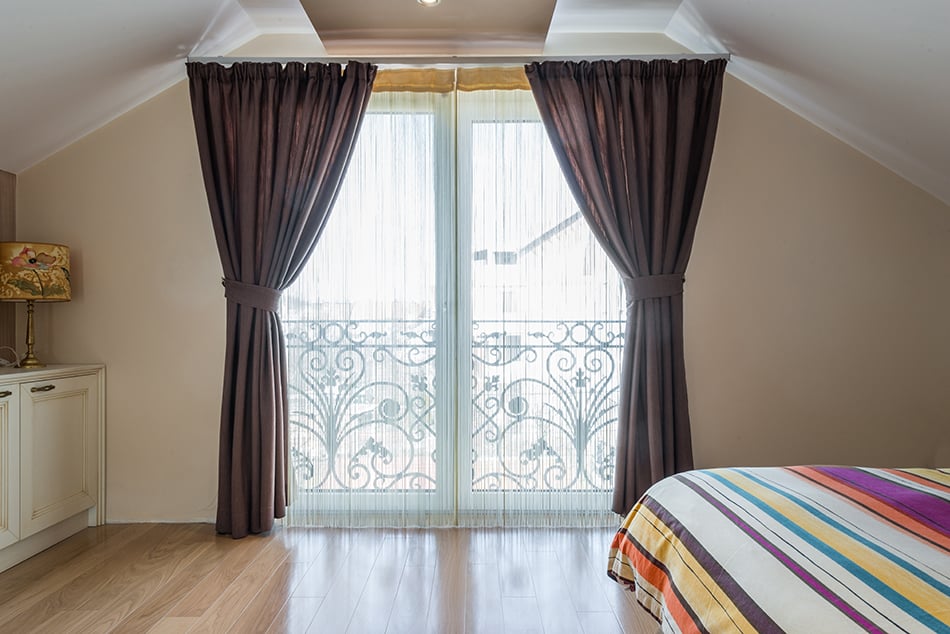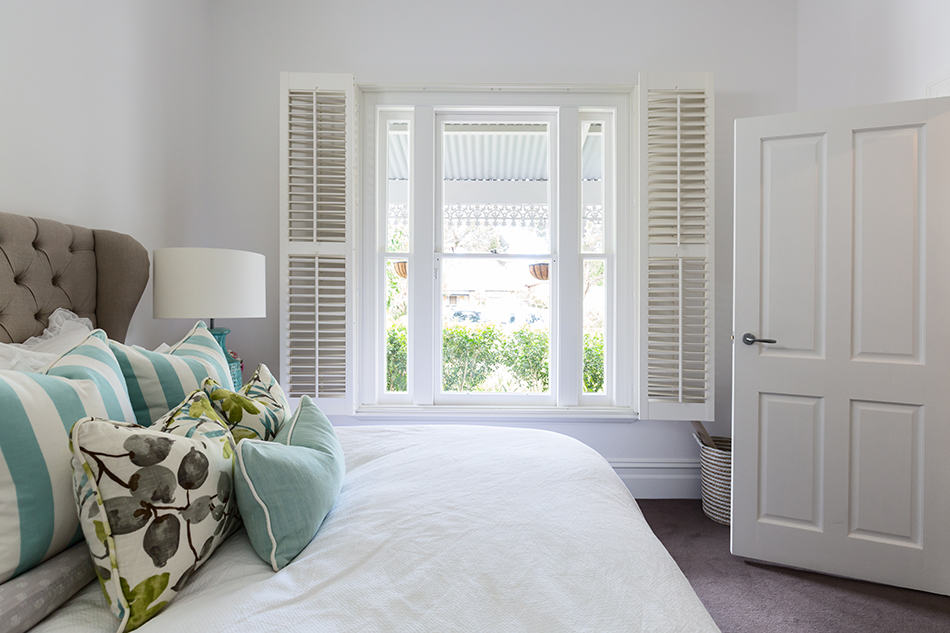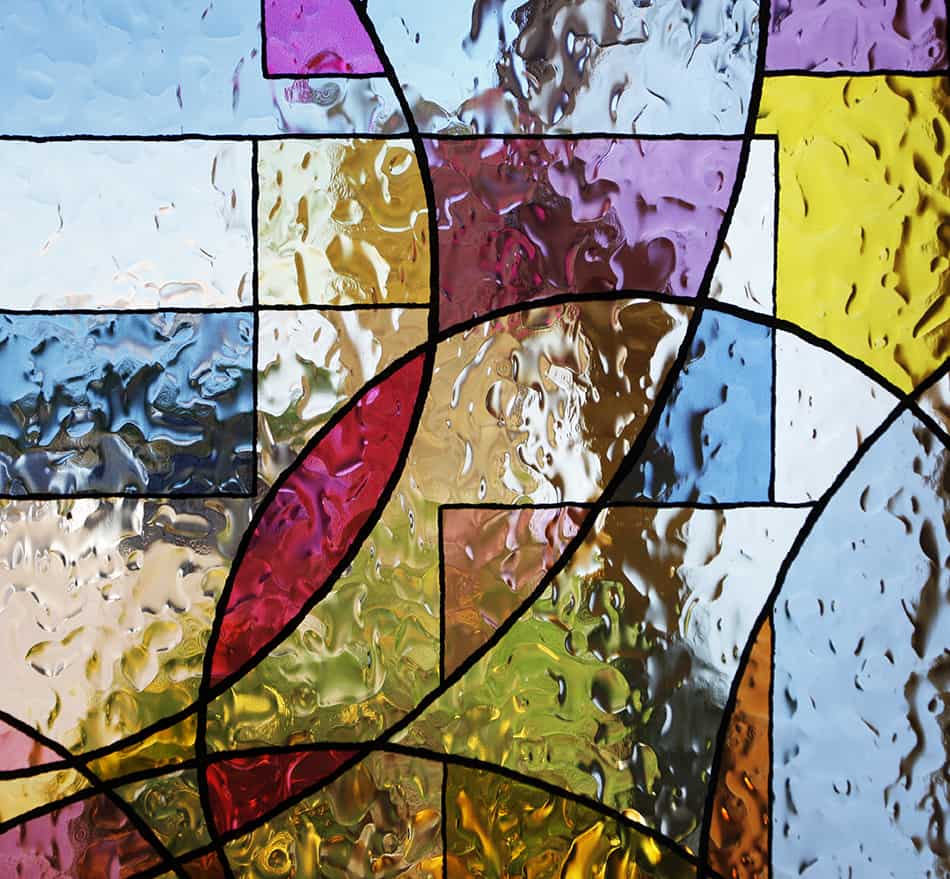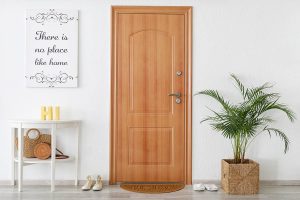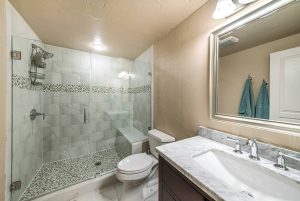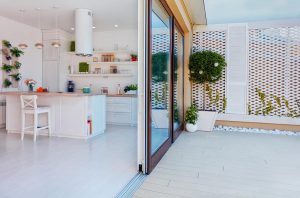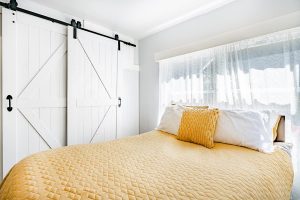Glass doors are a popular feature in both traditional and modern homes, allowing light to flood in and providing the occupants of the house with a more airy room with the feeling of spaciousness.
Glass doors do have their drawbacks, though, especially if they are at the front of your home where passersby can look in or if they’re at the back of your property but your garden is overlooked by neighbors.
If you feel uncomfortable with the idea of other people being able to see right into your home and watch what your family is doing, there are several things you can do to obstruct their vision or entirely block their view.
Creating privacy is also important for security reasons, as glass doors make it all too easy for potential thieves or intruders to get a good idea of the layout of your home and the types of belongings you have.
This list covers all of the options for covering your glass doors in order to create a greater level of privacy, giving your family peace of mind to enjoy your home.
Window Film
Window film is most commonly made from Polyethylene Terephthalate. It is a type of flexible plastic film that comes on a roll and can be cut to size to fit any type of window.
It is usually fixed to the window using a static cling or an adhesive. It is applied on the interior of the window and is a popular way to improve the privacy of glass in doors because it is not permanent and can be peeled off without damaging the window underneath.
It is also a quick and inexpensive option that can be applied easily to windows by the homeowner. Window film is one of the easiest ways to block light from windows or doors without using a curtain; It will still allow light to go through but is effective in filtering light, reducing glare and heat, and effectively cooling the room.
Reflective/Privacy Window Film
This film is great if you want to have privacy in your home without sacrificing the view or the natural light. It is a reflective film that creates a mirror effect when the light outside the home is brighter than the light inside the home.
This means that during daylight hours, anyone outside the window will not be able to see inside and instead will just see their reflection, while anyone inside the home will be able to see outside like usual.
This is ideal for creating privacy during the day, but it will have the opposite effect during the evening if it is dark outside and there are lights on inside the home; therefore, it will not provide privacy at night.
These privacy films are generally very easy to use, and they also help to keep homes cooler during the summer because they block UV rays.
If you have glass doors in an internal room, such as an office, and you want total privacy without blocking out light or your views, then a one-way privacy film is an ideal solution.
You can get a privacy film that works using static cling, with no adhesive required at all. This means you simply need to cut the sheets to size and press them against your window, making for an easy, mess-free install. This means you can simply pull them down if you change your mind and want your regular glass doors back.
A similar type of privacy film is activated using a soapy water spray, which is slightly more messy but still simple and effective.
Opaque Window Film
Opaque window film will completely block the glass, so people outside won’t be able to see into the home, but those inside the property also won’t be able to see out.
This can work in some situations. For example, if you have an ugly view, you want to block it out while also creating privacy. Don’t use this film unless you are prepared to sacrifice your vision through the glass door.
Translucent Window Film
This window film will give a frosted look, improving the level of privacy behind your glass door while still allowing light through.
This type of glass covering is ideal for maintaining a bright space behind the window, but it will block out the view.
Decorative Window Film
Decorative film has come a long way over the last decade, and you can now buy window film in almost any pattern or color you could imagine.
Decorative film is great for creating privacy in rooms with glass doors while also adding an interesting aesthetic feature to the glass. Decorative film is generally inexpensive, easy to install, and can be removed quickly and easily without causing lasting damage.
All of these things make decorative films very popular DIY choices for improving privacy levels. The effect that your decorative film has is going to be dependent on the style you choose.
Heavily frosted or etched decorative film will allow light through but may block your view in both directions, so the large tree you used to gaze at in your front yard now simply looks like a giant dark green shadow.
You can find a decorative film that matches your decor, for example, a floral print pattern or a striped pattern, or you could opt for a stained glass print that will give the effect of traditional stained glass windows in your glass door.
The pattern on a decorative window film will also determine how much of the view you’re able to see through the glass and how much light is let in.
Window films with heavy decoration will provide the most privacy but block out the most view, while patterned films with large clear spaces amongst the decoration will offer the opposite.
Most types of decorative film have self-adhesive backing, so you simply need to cut them to size and remove the backing paper, but static cling options are also available.
Colored Window Film
Colored window film can increase the privacy behind your glass door without sacrificing natural light while also adding a different look to your home.
Colored window film will cause the light that streams through the glass to be slightly tinted, so a red window film will give the room a warm glow, while a black film would make the room a little darker and more atmospheric.
Blinds
Venetian Blinds
These blind choices can be made from plastic, metal, wood, or faux wood. They are made up of a series of horizontal slats which are connected to a cord or wand which controls the slats, causing them to tilt.
These are great solutions for creating privacy over glass doors if you want multiple options, which you can change easily. You can tilt the slats of the blind to a certain degree to create full privacy or any number of semi-private angles.
You can also have it partially open and tilted down, which will allow light in but prevent anyone outside from seeing in.
Sheer Blinds
Sheer blinds are a good option for allowing natural light through your glass doors while also creating a decent amount of privacy.
During the day, these blinds will provide complete privacy, while in the evening, if you have a light turned on in the home, people outside looking in will just be able to see shadows of anyone moving.
Roller Blinds
Roller blinds are great if you only want privacy at certain times of day, so for example, you can keep them open all day to allow light to flood in and enjoy the view, and at night roll them down to block everything out.
Roman Blinds
Roman blinds are made from folded layers of fabric which can be lowered in segments. These look great when they are covering around two-thirds of the window, therefore preventing anyone from seeing into your home at eye level but still allowing some natural light in.
Drapes
Many people choose to hang drapes at the sides of their glass doors as a way to accentuate the door as a feature and provide them with privacy when the drapes are closed.
Thick drapes also double up as an added layer of insulation, helping to prevent cold drafts from getting into the home. Sheer drapes are an alternative option to use over a glass door, and these can be closed permanently, allowing light in while adding privacy.
Curtains
Curtains on doors aren’t to everyone’s taste, but they can work wonders on glass doors to ensure total privacy when they are fully drawn, to block out the view of any passing people or potential intruders.
You can install a curtain pole on your door so that the curtain itself moves when the door opens, or install a curtain pole over the top of the door and pull your privacy curtains to the side so it isn’t in the way of the door being opened.
Use fully lined curtains to block out light and obstruct views into your home; this is perfect if early morning light finds its way into your bedroom and wakes you up. Or opt for sheer curtains for semi-privacy and to benefit from light flowing into the space.
Shutters
Shutters are a traditional type of window covering which can also be added to glass doors. Shutters are usually made from wood and can come in a variety of finishes and colors.
They give a home a classic style reminiscent of country cottages and are great for adding an additional layer of privacy to a home. But of course, privacy comes at the cost of entirely blocking out the light and the view to the outside.
You can choose to keep the shutters fully closed for optimum privacy or tilt the slats to create an interrupted view that will give you partial privacy while allowing in daylight.
Shutters are generally quite expensive, but they can improve the look of your home both inside and out and add to the curb appeal of the property.
Glass Etching Cream
This is a great option for permanently frosting the glass in your door and is pretty easy and cost-effective. The glass etching cream contains hydrofluoric acid, which, when applied to glass, will cause the molecular bonds to dissolve, resulting in transparent glass transforming into a frosted glass.
Glass etching cannot be reversed and therefore should only be considered if you are sure you no longer want transparent glass. It must be applied carefully to prevent the frame of the door from sustaining damage and also to prevent it from accidentally coming into contact with skin.
With glass etching cream, you also have the option of creating patterns or separate areas of etched glass with a stencil so that some of the glass remains clear.
Be sure to mask the door frame with decorator’s tape and follow the manufacturer’s instructions. Most types of glass etching cream require around four hours to work before they can be washed off with warm water.
Glass Paint
If you are certain that you want an increased level of privacy in your home permanently, then glass paint is a good option. Glass paint for windows usually comes in an aerosol spray bottle, and you simply direct it straight at your glass after cleaning the glass and protecting the frame with decorators tape.
Most types of glass paint aimed at creating privacy come in frosted versions, which give the effect of frosted glass. This will still allow light to flow into the room, but it will reduce glare and drastically improve privacy.
If you are using this on a glazed door on the exterior of your home, you should apply it from the inside of the house rather than the outside because it will wear much better when not exposed to the elements.
From the outside, when passing people look into your home, they will not be able to see much at all during daylight hours, except for possibly the very vague outline of some shapes of colors.
During the night, if no artificial lighting is switched on in the home, then intruders will not be able to see anything through your frosted-painted glass door.
However, if you did have lights on in the house, then they could make out the vague outline of people moving, for example. You can customize the level of privacy you achieve using glass paint by spraying it on in very thin layers.
If the first layer does not provide enough privacy for your liking, then you can add a second layer and repeat the process until you achieve the effect you want.
Glass paint adheres directly to the glass, and once it is dry, it will not budge. It is extremely difficult to remove, so only use this product if you want it as a long-term solution for privacy through your glass doors.
As well as frosted glass paint, you can also get glass paint in an array of colors, which you could use to add an interesting aesthetic to your glass door while creating more privacy.
Some glass paints also offer the advantage of UV filtering, which means that the harmful rays produced by the sun will be vastly reduced in your home.
This can prevent furniture and other belongings from fading and also means your home will remain cooler during hot summers.
Glass paint is permanent in the sense that if you leave it alone, it will not fade, peel away, or wear; however, if you make a mistake or change your mind at a later date you can remove the glass paint by scraping it off with a glass scraper.
If you are quite artistic, you could also buy glass paint that can be painted onto the glass and create your own faux stained glass door.
